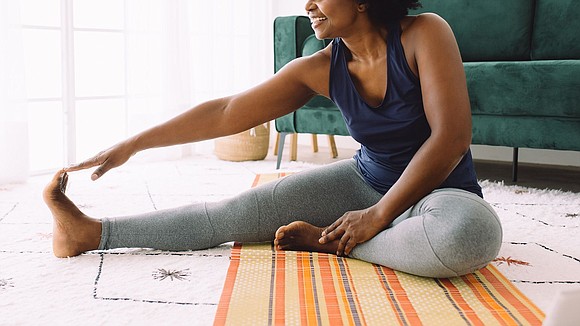Seasonal blues? Here’s how to move more and feel better
CNN/Stylemagazine.com Newswire | 1/20/2024, 12:17 p.m.

Originally Published: 20 JAN 24 12:00 ET
Dana Santas, CNN
(CNN) — The shorter, darker days of winter present a mental health challenge to many people. For some, the seasonal shift can lead to a clinically depressive state aptly called seasonal affective disorder, or SAD. Symptoms include low energy, lack of motivation, disrupted sleep and a sense of hopelessness.
Whether you’re experiencing SAD or proactively looking to ward off depression, with a little physical effort you can tap into your body’s natural ability to boost your mental health during the gloomier days of the season.
It’s no secret that regular physical activity is good for the body, reducing the risk of developing debilitating issues and diseases such as high blood pressure, heart disease, diabetes and certain types of cancer. But moving your body also offers profound benefits in terms of reducing stress, anxiety and depression.
Even better, it takes less effort than you might think to realize the mental benefits. Brisk walking and other moderate activity can promote psychological health just as well as more rigorous workouts, according to the American Psychological Association.
Below, I’ve outlined four science-backed ways you can become more active to boost your mental health and ease the winter blues.
Important note: If you are suffering from symptoms of SAD, talk to your doctor for treatment advice and to rule out any other medical issues that can cause similar symptoms. Consult your doctor before beginning any new forms of exercise.
Put one foot in front of the other
When you’re feeling down, the thought of exercising might seem overwhelming, but simply putting one foot in front of the other can get you on the path to overcoming seasonal blues. Walking is one of the most accessible, beneficial aerobic exercises you can do. With a supportive pair of walking shoes and a little attention to proper form, you can start walking your way to feeling better in your body and mind.
Don’t let winter weather hinder your ability to take a walk. Hop on a treadmill, if you have access to one, or do laps inside at your local mall. Many malls unlock their doors early to allow walkers to get their steps in before the stores open.
Any amount of daily walking will help, so don’t get hung up on how much or how often you should walk initially. Meeting the World Health Organization’s guidelines of 2.5 hours of moderate exercise weekly provides maximum overall physical and mental health benefits, but studies have shown that even relatively small doses of activity offer significant mental health benefits. Simply start by taking that first step, knowing that you are moving in the right direction.
Have fun in your free time
Going to the gym isn’t the only way to exercise. Consider some of the activities you enjoy in your free time that you might not have previously viewed as exercise.
Any activity that gets you standing and moving constitutes being physically active. Do you like bowling, dancing or even axe throwing? Set a weekly date to enjoy your active pastime regularly. Just an hour a week of leisure-time exercise of any intensity reduces incidence of future depression, research has shown.
If you don’t have any active hobbies, try new ones. Sign up for a dance class or other recreational fitness class. You can find local classes and recreational groups online via Facebook and community-based social apps such as Meetup. If you’re a parent or grandparent, get involved in playtime with the kids. Whether you’re in the living room, the backyard or the playground, join in on the fun.
Lift weights to lift your mood
Aerobic exercise isn’t the only way to boost your mood. When you’re looking for a pick-me-up, consider picking up some weights. Strength training, also called resistance training or weight training, has been shown in numerous studies to reduce symptoms of depression significantly.
A 2018 study, published in JAMA Psychiatry, analyzed 33 clinical trials involving more than 1,800 people for the effects of resistance exercise on depression and found that strength training “significantly reduced depressive symptoms” among participants. What’s more, the study’s authors found that benefits did not diminish regardless of health status, total prescribed volume of resistance exercise training or levels of improvement in strength.
If you’re new to strength training, it’s important to select the right weight and start slow. Consider trying a workout using only one dumbbell, focusing on combining a series of exercises that can work your whole body.
Move your body on your yoga mat
Rolling out your yoga mat can give you a much-needed boost on dark, winter days.
Historically, yoga practitioners have touted its mood-boosting properties, and research agrees that there is a promising link between doing yoga and easing depression.
A 2023 randomized controlled clinical trial led by Massachusetts General Hospital researchers found that adults with moderate-to-severe depression who participated in heated yoga sessions experienced significantly greater reductions in depressive symptoms compared with those who did not.
Yoga classes abound at gyms, studios and community centers. If you can’t or don’t want to attend classes, you can easily practice yoga at home, following simple routines available online.
Whatever form of exercise you choose, adding just a little more physical activity into your life will provide noticeable mood-boosting benefits to help you get past the seasonal slump.
The-CNN-Wire








